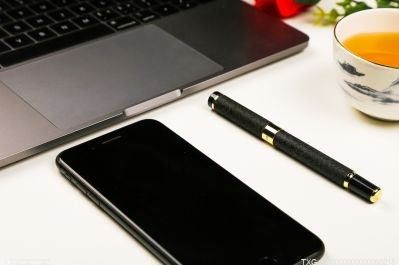Python为人脸照片添加口罩实战
目录
效果展示为人脸照片添加口罩代码掩膜生成代码效果展示
数据集展示
数据集来源:使用了开源数据集FaceMask_CelebA
github地址:https://github.com/sevenHsu/FaceMask_CelebA.git
部分人脸数据集:
口罩样本数据集:
为人脸照片添加口罩代码
这部分有个库face_recognition需要安装,如果之前没有用过的小伙伴可能得费点功夫。
Face Recognition 库主要封装了dlib这一 C++ 图形库,通过 Python 语言将它封装为一个非常简单就可以实现人脸识别的 API 库,屏蔽了人脸识别的算法细节,大大降低了人脸识别功能的开发难度。
#!/usr/bin/env python
# -*- coding: utf-8 -*-
# @Author : 2014Vee
import os
import numpy as np
from PIL import Image, ImageFile
__version__ = "0.3.0"
IMAGE_DIR = os.path.dirname("E:/play/FaceMask_CelebA-master/facemask_image/")
WHITE_IMAGE_PATH = os.path.join(IMAGE_DIR, "front_14.png")
BLUE_IMAGE_PATH = os.path.join(IMAGE_DIR, "front_14.png")
SAVE_PATH = os.path.dirname("E:/play/FaceMask_CelebA-master/save/synthesis/")
SAVE_PATH2 = os.path.dirname("E:/play/FaceMask_CelebA-master/save/masks/")
class FaceMasker:
KEY_FACIAL_FEATURES = ("nose_bridge", "chin")
def __init__(self, face_path, mask_path, white_mask_path, save_path, save_path2, model="hog"):
self.face_path = face_path
self.mask_path = mask_path
self.save_path = save_path
self.save_path2 = save_path2
self.white_mask_path = white_mask_path
self.model = model
self._face_img: ImageFile = None
self._black_face_img = None
self._mask_img: ImageFile = None
self._white_mask_img = None
def mask(self):
import face_recognition
face_image_np = face_recognition.load_image_file(self.face_path)
face_locations = face_recognition.face_locations(face_image_np, model=self.model)
face_landmarks = face_recognition.face_landmarks(face_image_np, face_locations)
self._face_img = Image.fromarray(face_image_np)
self._mask_img = Image.open(self.mask_path)
self._white_mask_img = Image.open(self.white_mask_path)
self._black_face_img = Image.new("RGB", self._face_img.size, 0)
found_face = False
for face_landmark in face_landmarks:
# check whether facial features meet requirement
skip = False
for facial_feature in self.KEY_FACIAL_FEATURES:
if facial_feature not in face_landmark:
skip = True
break
if skip:
continue
# mask face
found_face = True
self._mask_face(face_landmark)
if found_face:
# save
self._save()
else:
print("Found no face.")
def _mask_face(self, face_landmark: dict):
nose_bridge = face_landmark["nose_bridge"]
nose_point = nose_bridge[len(nose_bridge) * 1 // 4]
nose_v = np.array(nose_point)
chin = face_landmark["chin"]
chin_len = len(chin)
chin_bottom_point = chin[chin_len // 2]
chin_bottom_v = np.array(chin_bottom_point)
chin_left_point = chin[chin_len // 8]
chin_right_point = chin[chin_len * 7 // 8]
# split mask and resize
width = self._mask_img.width
height = self._mask_img.height
width_ratio = 1.2
new_height = int(np.linalg.norm(nose_v - chin_bottom_v))
# left
mask_left_img = self._mask_img.crop((0, 0, width // 2, height))
mask_left_width = self.get_distance_from_point_to_line(chin_left_point, nose_point, chin_bottom_point)
mask_left_width = int(mask_left_width * width_ratio)
mask_left_img = mask_left_img.resize((mask_left_width, new_height))
# right
mask_right_img = self._mask_img.crop((width // 2, 0, width, height))
mask_right_width = self.get_distance_from_point_to_line(chin_right_point, nose_point, chin_bottom_point)
mask_right_width = int(mask_right_width * width_ratio)
mask_right_img = mask_right_img.resize((mask_right_width, new_height))
# merge mask
size = (mask_left_img.width + mask_right_img.width, new_height)
mask_img = Image.new("RGBA", size)
mask_img.paste(mask_left_img, (0, 0), mask_left_img)
mask_img.paste(mask_right_img, (mask_left_img.width, 0), mask_right_img)
# rotate mask
angle = np.arctan2(chin_bottom_point[1] - nose_point[1], chin_bottom_point[0] - nose_point[0])
rotated_mask_img = mask_img.rotate(angle, expand=True)
# calculate mask location
center_x = (nose_point[0] + chin_bottom_point[0]) // 2
center_y = (nose_point[1] + chin_bottom_point[1]) // 2
offset = mask_img.width // 2 - mask_left_img.width
radian = angle * np.pi / 180
box_x = center_x + int(offset * np.cos(radian)) - rotated_mask_img.width // 2
box_y = center_y + int(offset * np.sin(radian)) - rotated_mask_img.height // 2
# add mask
self._face_img.paste(mask_img, (box_x, box_y), mask_img)
# split mask and resize
width = self._white_mask_img.width
height = self._white_mask_img.height
width_ratio = 1.2
new_height = int(np.linalg.norm(nose_v - chin_bottom_v))
# left
mask_left_img = self._white_mask_img.crop((0, 0, width // 2, height))
mask_left_width = self.get_distance_from_point_to_line(chin_left_point, nose_point, chin_bottom_point)
mask_left_width = int(mask_left_width * width_ratio)
mask_left_img = mask_left_img.resize((mask_left_width, new_height))
# right
mask_right_img = self._white_mask_img.crop((width // 2, 0, width, height))
mask_right_width = self.get_distance_from_point_to_line(chin_right_point, nose_point, chin_bottom_point)
mask_right_width = int(mask_right_width * width_ratio)
mask_right_img = mask_right_img.resize((mask_right_width, new_height))
# merge mask
size = (mask_left_img.width + mask_right_img.width, new_height)
mask_img = Image.new("RGBA", size)
mask_img.paste(mask_left_img, (0, 0), mask_left_img)
mask_img.paste(mask_right_img, (mask_left_img.width, 0), mask_right_img)
# rotate mask
angle = np.arctan2(chin_bottom_point[1] - nose_point[1], chin_bottom_point[0] - nose_point[0])
rotated_mask_img = mask_img.rotate(angle, expand=True)
# calculate mask location
center_x = (nose_point[0] + chin_bottom_point[0]) // 2
center_y = (nose_point[1] + chin_bottom_point[1]) // 2
offset = mask_img.width // 2 - mask_left_img.width
radian = angle * np.pi / 180
box_x = center_x + int(offset * np.cos(radian)) - rotated_mask_img.width // 2
box_y = center_y + int(offset * np.sin(radian)) - rotated_mask_img.height // 2
# add mask
self._black_face_img.paste(mask_img, (box_x, box_y), mask_img)
def _save(self):
path_splits = os.path.splitext(self.face_path)
# new_face_path = self.save_path + "/" + os.path.basename(self.face_path) + "-with-mask" + path_splits[1]
# new_face_path2 = self.save_path2 + "/" + os.path.basename(self.face_path) + "-binary" + path_splits[1]
new_face_path = self.save_path + "/" + os.path.basename(self.face_path) + "-with-mask" + path_splits[1]
new_face_path2 = self.save_path2 + "/" + os.path.basename(self.face_path) + "-binary" + path_splits[1]
self._face_img.save(new_face_path)
self._black_face_img.save(new_face_path2)
# print(f"Save to {new_face_path}")
@staticmethod
def get_distance_from_point_to_line(point, line_point1, line_point2):
distance = np.abs((line_point2[1] - line_point1[1]) * point[0] +
(line_point1[0] - line_point2[0]) * point[1] +
(line_point2[0] - line_point1[0]) * line_point1[1] +
(line_point1[1] - line_point2[1]) * line_point1[0]) / \
np.sqrt((line_point2[1] - line_point1[1]) * (line_point2[1] - line_point1[1]) +
(line_point1[0] - line_point2[0]) * (line_point1[0] - line_point2[0]))
return int(distance)
# FaceMasker("/home/aistudio/data/人脸.png", WHITE_IMAGE_PATH, True, "hog").mask()
from pathlib import Path
images = Path("E:/play/FaceMask_CelebA-master/bbox_align_celeba").glob("*")
cnt = 0
for image in images:
if cnt < 1:
cnt += 1
continue
FaceMasker(image, BLUE_IMAGE_PATH, WHITE_IMAGE_PATH, SAVE_PATH, SAVE_PATH2, "hog").mask()
cnt += 1
print(f"正在处理第{cnt}张图片,还有{99 - cnt}张图片")
掩膜生成代码
这部分其实就是对使用的口罩样本的二值化,因为后续要相关模型会用到
import os
from PIL import Image
# 源目录
# MyPath = "E:/play/FaceMask_CelebA-master/facemask_image/"
MyPath = "E:/play/FaceMask_CelebA-master/save/masks/"
# 输出目录
OutPath = "E:/play/FaceMask_CelebA-master/save/Binarization/"
def processImage(filesoure, destsoure, name, imgtype):
"""
filesoure是存放待转换图片的目录
destsoure是存在输出转换后图片的目录
name是文件名
imgtype是文件类型
"""
imgtype = "bmp" if imgtype == ".bmp" else "png"
# 打开图片
im = Image.open(filesoure + name)
# =============================================================================
# #缩放比例
# rate =max(im.size[0]/640.0 if im.size[0] > 60 else 0, im.size[1]/1136.0 if im.size[1] > 1136 else 0)
# if rate:
# im.thumbnail((im.size[0]/rate, im.size[1]/rate))
# =============================================================================
img = im.convert("RGBA")
pixdata = img.load()
# 二值化
for y in range(img.size[1]):
for x in range(img.size[0]):
if pixdata[x, y][0] < 90:
pixdata[x, y] = (0, 0, 0, 255)
for y in range(img.size[1]):
for x in range(img.size[0]):
if pixdata[x, y][1] < 136:
pixdata[x, y] = (0, 0, 0, 255)
for y in range(img.size[1]):
for x in range(img.size[0]):
if pixdata[x, y][2] > 0:
pixdata[x, y] = (255, 255, 255, 255)
img.save(destsoure + name, imgtype)
def run():
# 切换到源目录,遍历源目录下所有图片
os.chdir(MyPath)
for i in os.listdir(os.getcwd()):
# 检查后缀
postfix = os.path.splitext(i)[1]
name = os.path.splitext(i)[0]
name2 = name.split(".")
if name2[1] == "jpg-binary" or name2[1] == "png-binary":
processImage(MyPath, OutPath, i, postfix)
if __name__ == "__main__":
run()
到此这篇关于Python为人脸照片添加口罩实战的文章就介绍到这了,更多相关Python人脸照片添加口罩内容请搜索脚本之家以前的文章或继续浏览下面的相关文章希望大家以后多多支持脚本之家!
X 关闭
X 关闭

